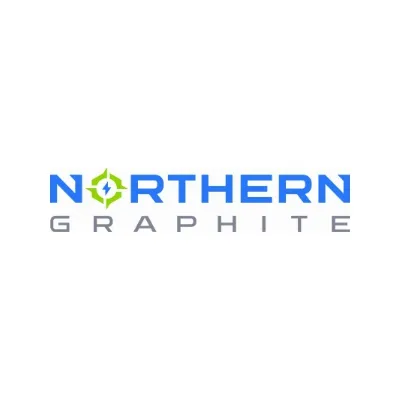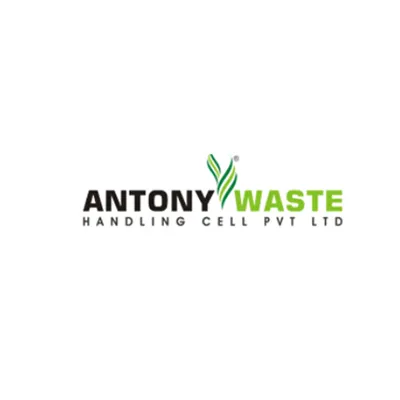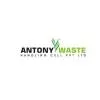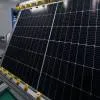The various activities of people, industries and countries over decades have wiped out green belts and are rapidly leading us to the precipice of a water shortage. The greatest danger, though, arises from rampant usage of water with no thought about conservation measures. That fact is now dawning upon us.
According to a news report, inspection teams in Delhi (appointed for the purpose) can levy a fine of Rs 2,000 on anyone wasting water and enforce a fine on anyone caught using pipes to wash cars, allowing water tanks to overflow and using domestic water supply for construction. They are also authorised to disconnect illegal water connections at construction sites that use water meant for domestic use.
To put things in perspective about the magnitude of water usage in the construction industry, Shrinivas Rao, FRICS, CEO, Vestian, says, “As per industry estimates, 350 litre of water is required to construct 1 sq m of wall. This extensive use of water resources during construction significantly depletes underground water levels. To replenish water levels, rainwater harvesting and sewage treatment plants [STPs] are effective methods. Replacing a certain portion of cement with fly ash in concrete along with drip
and membrane curing helps
reduce water consumption. Moreover, traditional bricks can be replaced with autoclaved aerated concrete [AAC] to save water. These methods can save 30-40 per cent water compared to conventional site conditions.”
Reducing reliance on freshwater sources
“Smart water meters would help identify leakages, if any, in pipes,” suggests Prasanna Venkatesh, Executive Vice President - Plumbing, Fire and Environment, Sobha, as a dripping tap or leaking pipe can lead to wastage of 30 litre of water per hour. He adds how the construction sector consumes a considerable amount of water in day-to-day operations such as tool washing, wet work (brickwork, concreting, plastering), dust suppression, groundwork (grouting and drilling), hydro-demolition and commission and testing of building services.
Meanwhile, Amar Sarin, Managing Director and CEO, TARC, says, “All our construction sites feature the usage of taps and fittings with built-in leak prevention. Installation of aerators can
help minimise water loss and so can installing electronic
leak-detection devices.”
In the view of Venkatesh, “The industry should explore the possibility of using treated wastewater from STPs for all purposes, except primary, i.e. drinking or domestic. To start with, water required for non-contact activities like dust suppression may be substituted with STP-treated water. The challenges involving STP-treated wastewater is availability and quality as per codal requirements. A centralised system like an application will be useful to indicate availability of water as well as its quality parameters. The onus of the quality of treated water will be with end-users and they may verify the same through any duly accredited laboratory.”
To reduce onsite water consumption, Robin Chhabra, Founder and CEO, Dextrus Workspace, recommends, “While we do limited brickwork, concreting and plastering, we recommend using recycled or harvested rainwater for tool washing, dust suppression and wet work, such as bricklaying and concreting. Further, employing water-saving technologies such as low-flow fixtures and water-efficient equipment can reduce consumption. Also, educating workers about the importance
of water conservation and
training them in efficient water usage techniques can have a significant impact.”
“Implementing smart water management systems with real-time data on water consumption can help identify areas for improvement and ensure adherence to conservation goals,” suggests Pranay Kumar, ED, Rudrabhishek Enterprises (REPL). “Moreover, rainwater harvesting and greywater recycling systems should be incorporated into the site infrastructure to supplement non-potable water needs. Using drought-resistant plants for landscaping and smart irrigation systems can further reduce water consumption.”
“Effective strategies to reduce onsite water consumption include installation of water meters to monitor usage and identify areas of high consumption; use of high-pressure, low-volume washing systems to be implemented for tool and tyre washing; recycling and reusing wash water wherever possible; optimise water-to-cement ratio to minimise water use without compromising quality for wet work; use methods such as chemical suppressants or misting systems for dust suppression; use grout mixtures that require less water for ground work; optimise of water jet pressure to use the minimal amount of water necessary for hydro-demolition; and reuse water used during commissioning and testing processes,” advises Sarin.
“Small measures can generate positive outcomes,” avers Jatin Shah, Chief Strategy Officer, Colliers India. “Corporates can install waterless urinals, WC flushes can be reduced to 2 litres in housing and commercial projects, and aerators should be a must in all outflows. On an individual level, switching to bucket baths instead of showers will save around 30-40 litre per day and wastewater from reverse osmosis (RO) and AC drains can be used for mopping, gardening or car washes. We can also reduce the frequency of car washes and use mist spray instead of a bucket of water. On a broader spectrum, initiatives like adopting technologies to treat STP water and letting excessive STP-treated water flow into city lakes instead of drains will also help curb the water crisis.”
Planning early
Ideally, water-saving principles should be incorporated early in any project’s design.
“We incorporate rainwater harvesting into our projects in the design stage itself,” shares Venkatesh. “Storage tanks are provided to collect rainwater from rooftops and use for primary purposes (domestic drinking) with minimal treatment. The capacities of the rainwater harvesting structures provided by us are often much beyond statutory norms. We provide STPs to treat 100 percent of the wastewater generated in the project. The treated water is recycled for flushing and reused for irrigation. Besides, we provide a four-line plumbing system for domestic, drinking, flushing and irrigation in all our projects. Our centralised water treatment plants (WTPs) treat raw water for domestic standards. For supplying to kitchens for human consumption, the water is further treated in a centralised RO plant wherever the source of water is groundwater or tanker water. The reject from RO is recycled into the STP-treated water tank for further reuse. This recycling of RO reject water significantly reduces the quantum wastage of water. The Sobha City project in Thrissur, Kerala, is India’s first project to be certified under IGBC Net-Zero Water Rating System and has achieved the highest Platinum rating (Net Water Positive Project - Residential category). It achieved this by creating an artificial lake stretching over 6.5 acre that collects 100 per cent of the rainwater runoff from the site. The rainwater is treated in water treatment plants up to IS 10500-2012 standards and reused for domestic purposes. In fact, the entire freshwater demand of the project is met with harvested rainwater, whereas water for secondary purposes like flushing and irrigation is met with STP-treated water. Hence, there is no dependence on any external source or groundwater to meet the water demand of the project. A lot of this has to do with the mindset and apprehension of developers regarding the quality of water available for construction. Studies on the effects of STP-treated water on concrete and steel over the lifetime of a typical building will go a long way in assuaging the fears of developers and you might find them increasingly receptive to the use of treated water. Also, another concern is regarding quality control and assurance of STP-treated water. Bodies like CREDAI, Karnataka Pollution Control Board (KSPCB) and Bangalore Water Supply and Sewerage Board (BWSSB) should get together and chart out a time-bound plan to address the concerns of developers.”
“We prioritise water-saving principles in project design by incorporating rainwater harvesting systems, using water-efficient fixtures and employing greywater recycling for non-potable uses,” says Sarin. “We identified high water consumption in dust suppression, concrete mixing and equipment washing. To address this, we implemented smart irrigation systems for landscaping, used alternative dust control methods like chemical suppressants, and opted for high-pressure, low-volume washing systems. Additionally, we train staff on water conservation and regularly monitor water usage to continuously improve efficiency and reduce wastage.”
And Chhabra says, “We install tap aerators and auto faucets to improve water flow speed and efficiency. We use low-flow toilets, faucets and showerheads to reduce water usage. Moreover, we use treated wastewater and rainwater for flush water and landscaping, which elevates employee productivity. We conserve water use in planters by replacing soil with clay pellets.”
Dry mortar usage
Using dry mortar, which is already mixed in the right proportion, efficiently reduces overall water requirement. Also, by using dry mortar, one can eliminate the need for curing, helping in enormous conservation.
The advantages of dry-mix mortar are that it can be transported in a simple container, stirred automatically, pumped and applied by machines, increasing work efficiency to 500-600 per cent. Stirring and applying by machine ensures that the mortar can be processed and used correctly, avoiding water added too less or more, or other potential mistakes that can occur during formulation or with inexperienced workers, resulting in stable quality and longer durability. Dry-mix mortar is instrumental in improving industrial structure and modernising the industry.
About factors, including cost, that prevent construction firms from using this resource, Venkatesh says, “It reduces cement waste and project costs and as a thermal insulation and environment-friendly material it can contribute to energy savings and emission reductions. The disadvantages are that bags should be properly sealed to avoid any ingress of moisture. The consistency of the mix depends on the type of application and the cost implication where labour is available should be studied.”
“Factors preventing the widespread use of dry mortar include higher initial costs, limited availability and logistical challenges and storing pre-mixed materials,” in Sarin’s view. “Further, traditional construction practices and resistance to change hinders adoption. Some projects may require specific mixes that are
not readily available in dry
mortar form.”
Drip curing and fly ash
“Drip curing on site gives the optimum level of compressive strength along with an efficient use of the resource,” says Venkatesh. “Its advantages are that it is the most effective way to cure concrete with minimal consumption of water and is usually used in areas where mass concreting is planned, to reduce heat of hydration [in dams and heavy infra structures]. The disadvantage is that the network of pipes causes a hindrance to construction activity.”
“We use special curing compounds to minimise water usage for curing and use the right type of equipment while making the mix, which brings consistency in the mix and helps optimise water usage,” according to Chhabra. “Traditional curing methods such as water spraying or ponding seem deeply ingrained in construction practices. Also, the upfront costs associated with equipment and installation may deter some firms. Logistical challenges such as ensuring uniform water distribution and managing the system effectively throughout the curing period may pose practical barriers. So, efforts to raise awareness, address cost barriers and provide technical support for implementation could facilitate wider adoption.”
Weighing in, Sarin says, “These methods are less used mainly owing to higher initial costs, lack of familiarity and resistance to change within the industry. Drip curing systems can be complex to set up while sourcing and standardising fly ash for concrete mixes can be challenging. Additionally, limited availability and inconsistent
quality of fly ash deter
widespread adoption.”
“Fly ash is highly recommended to reduce water use and efficiency in construction,” adds Chhabra. “Challenges in implementation stem from logistical hurdles in sourcing and transportation. Despite lower water demand, additional admixtures may be needed, increasing complexity and cost. Better availability across the country could positively push adoption within the industry. Research, standardisation and education can reduce barriers
and enhance utilisation. Efforts
to promote awareness of its
benefits and mitigate concerns could facilitate broader adoption in the industry.”
A matter of water
The Bangalore Water Supply and Sewerage Board (BWSSB) treats about 1112.16 million litre per day (mld) of wastewater daily; yet, this water is hardly bought for construction activities. Even if half of the construction activities switch to treated water, a lot of groundwater could be saved. But not even 10 percent of treated water is used by people in the city.
“Primarily the mindset of the end-user and concerns about continued availability and quality of treated water need to be addressed for developers to wholeheartedly embrace the use of treated water for construction activities,” says Venkatesh. “All stakeholders are equally responsible for ensuring that end-users are adequately educated and trained, and all concerns are addressed to enable the use of treated water for construction. A centralised app that forms a repository of information about the availability and possible quality of treated water with reference to location may serve the purpose. This is crucial to avert similar crises as we faced this summer, as it is quite possible that such events will be more frequent in the coming future because of climate change.”
As for how much harvested rainwater is used for mixing cement, cleaning equipment and at the worksite, Sarin says, “On average, harvested rainwater can account for about 20-30 per cent of the water used for mixing cement, cleaning equipment and other onsite activities. This depends on the system’s capacity, local rainfall and the project’s water demand, significantly reducing reliance on potable water sources and enhancing sustainability.”
To this, Chhabra adds, “Estimating the amount of rainwater for construction depends on
project scale and duration,
regional weather patterns and site-specific requirements.”
“Treated wastewater can be effectively used in various construction operations, including dust suppression and equipment washing,” says Kumar. “Only wastewater treated by membrane bioreactor (MBR) can be used for concreting and curing. By adopting treated wastewater, construction projects can also showcase how it can support critical infrastructure projects. To facilitate this transition, regulatory frameworks should incentivise the use of treated wastewater, possibly through subsidies or tax benefits. By adopting treated wastewater,
the industry can significantly
reduce its freshwater footprint and support economic development without exacerbating the water scarcity issue.”
We are fast moving towards a groundwater disaster. NITI Aayog had warned that 21 Indian cities will run out of water by 2020. The alarm’s gone off long ago so what do we now need to wake us from this apathy? While on one hand, surface water resources are being destroyed on the other, groundwater resources are being over-exploited. We are all collectively responsible and it is time we started giving the drop of water ‘Boond’ (Hindi) the same sanctity as a ‘Boon’ from the Gods. -R SRINIVASAN




















